Inarizushi (いなり寿司) or Inari Sushi is a popular type of sushi or rice ball. Seasoned sushi rice is stuffed into sweet-and-savory simmered Aburaage (fried tofu pouches). While inarizushi is technically sushi, it’s not typically found at upscale sushi restaurants. Instead, it’s readily available at supermarket delis and takeout sushi stores. Inarizushi is a casual, everyday sushi and makes a perfect picnic lunch because it’s designed to be eaten with your hands.
What’s Inarizushi?
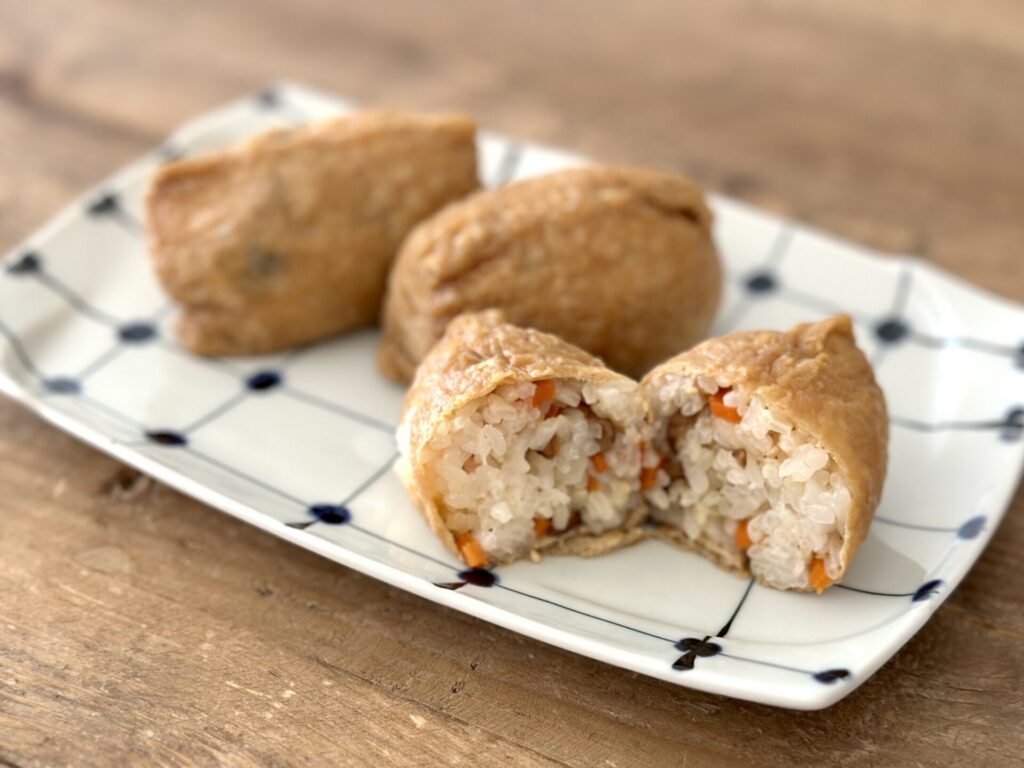
Inarizushi gets its name from Inari shrines, where fox deities are enshrined and believed to bring blessings of abundant harvests. It is said that offering Aburaage (fried tofu) – supposedly the favorite food of foxes – became the mainstream practice at these shrines. Inari-sushi first appeared in documents from the late Edo period in the mid-1800s, when street vendors in Edo (Tokyo) started selling this popular treat.
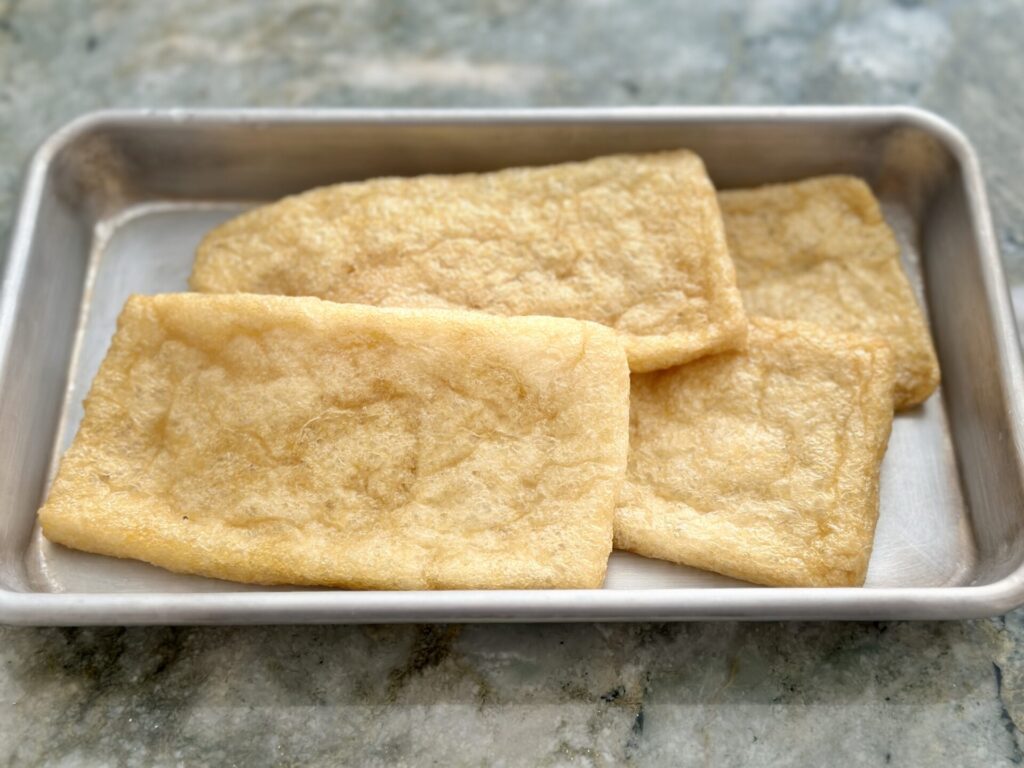

Inarizushi consists of fried tofu pouches (Aburaage) simmered in sweet or sweet-savory broth, then filled with either plain sushi rice or sushi rice mixed with simmered ingredients such as carrots and shiitake mushrooms. Aburaage is thin tofu skin that is deep-fried and used in many forms in Japanese cuisine. It has a slightly spongy texture. Because it’s deep-fried, it can be quite oily, so it’s often prepared by first boiling in hot water. For Inari, Aburaage is cooked and seasoned very sweet. Some may find it too sweet on its own; however, this sweet Aburaage perfectly complements the mild flavor of sushi rice. You can use regular white sushi rice to fill the Aburaage, but adding cooked vegetables to the sushi rice makes it even more flavorful. Vegetables give extra taste and make it more visually appealing.
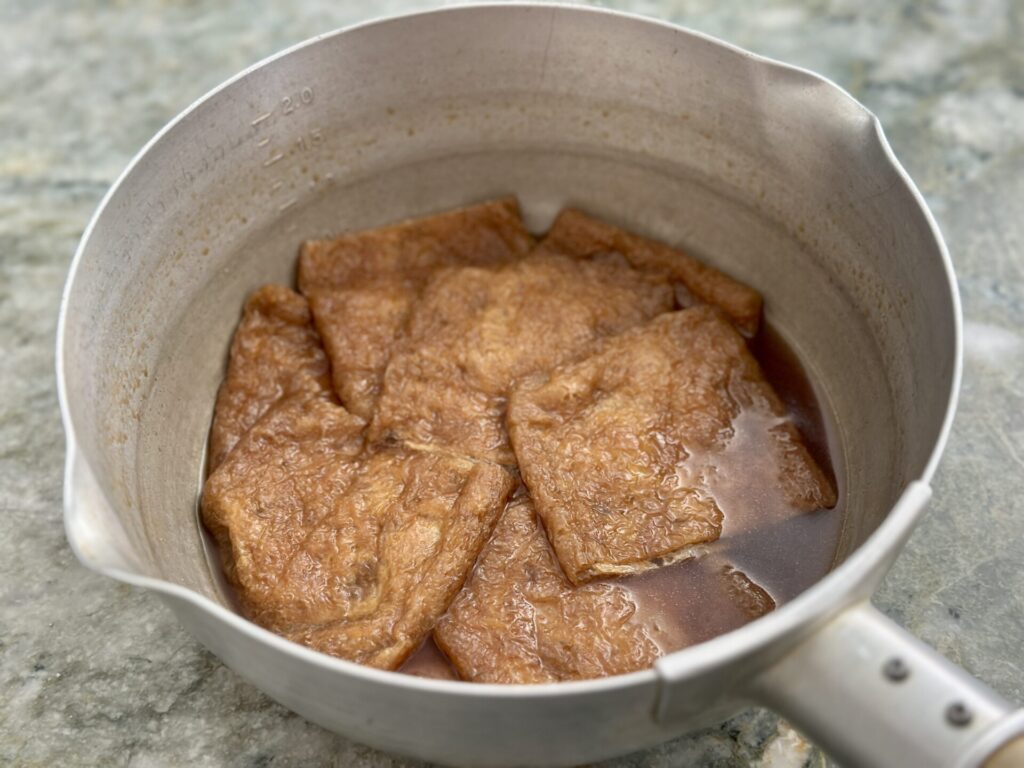
Tips and substitutions for Inarizushi
- For simplicity, use plain white sushi rice instead of mixed vegetable rice. It’s a great way to streamline the recipe when you’re short on time.
- Experiment with seasonal vegetables to vary the filling. Try bamboo shoots and Nanohana (rapeseed blossoms) in spring, or incorporate Hijiki seaweed for added nutrition and flavor. Season these vegetables as directed in the recipe or simply cook them with a bit of salt.
- Prepare the Aburaage tofu properly for best results:
- Start by gently rolling it out to help it open easily as a pouch
- Blanch in boiling water first to remove excess oil, then simmer in the seasoned broth until fully flavored, and allow the aburaage to soak in the sweet sauce long enough to absorb maximum flavor
- When filling the pouches, avoid squeezing out too much sauce, as that liquid contains all the delicious seasoning that makes inarizushi special
More recipes like Inarizushi
Short Video
Full recipe video is also available in the recipe box below and on our YouTube channel.
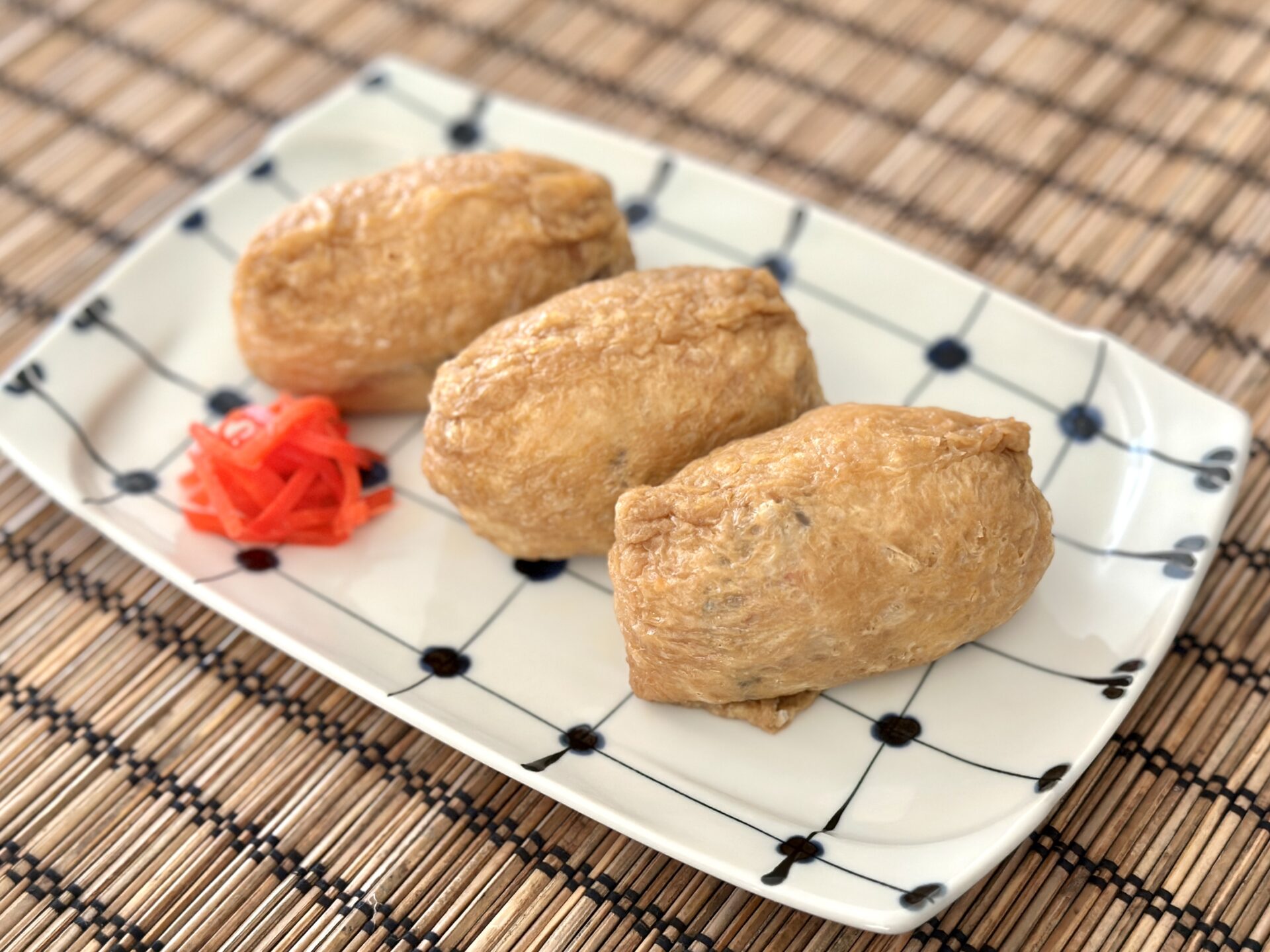
Inarizushi (Inari sushi) Recipe
Ingredients
- 2 cups water (480ml)
- 3 Tbsp soy sauce
- 4 Tbsp sugar
- 8 Aburaage squares (or 4 rectangle)
- 1 cup Dashi (or liquid from rehydrating Shiitake mushroom)
- 3 dried shiitake mushrooms
- 1 small carrot
- 3 cups Sushi rice
- 1 Tbsp soy sauce
- 1 Tbsp sugar
- 1 Tbsp sesame seeds
Instructions
- Roll the Aburaage with a rolling pin a couple of times to flatten them. Cut one side of each Aburaage. Carefully open each Aburaage to make a pouch. Boil the prepared Aburaage in hot water for a minute and drain well.
- Place water, soy sauce, and sugar in a pot and boil. Add the Aburaage, cook for 10-15 minutes, and let cool for at least 3 hours (overnight in the fridge).
- Hydrate shiitake mushrooms in water for 30 minutes. You can reserve the liquid to mix with Dashi later if you want.
- Remove stems from Shiitake mushrooms and slice thinly. Cut carrots thinly (1 1/2″ long).
- Boil Dashi with soy sauce and sugar in a pot, add carrots and mushrooms until the liquid is almost gone.
- Mix sushi rice, cooked vegetables, and sesame seeds well. Make 8 small oblong rice balls (there may be leftover rice). Squeeze the Aburaage just a little and stuff rice balls in the pouches.
Video
This recipe was originally published in May 2013. The post was updated on April 30, 2025 with more useful content, new photos and a short video


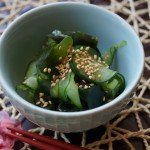
1 Comment
These are my favorites; I make this for their lunch often along with Onigiri. We follow a gluten free diet and these recipes are invaluable, thank you!